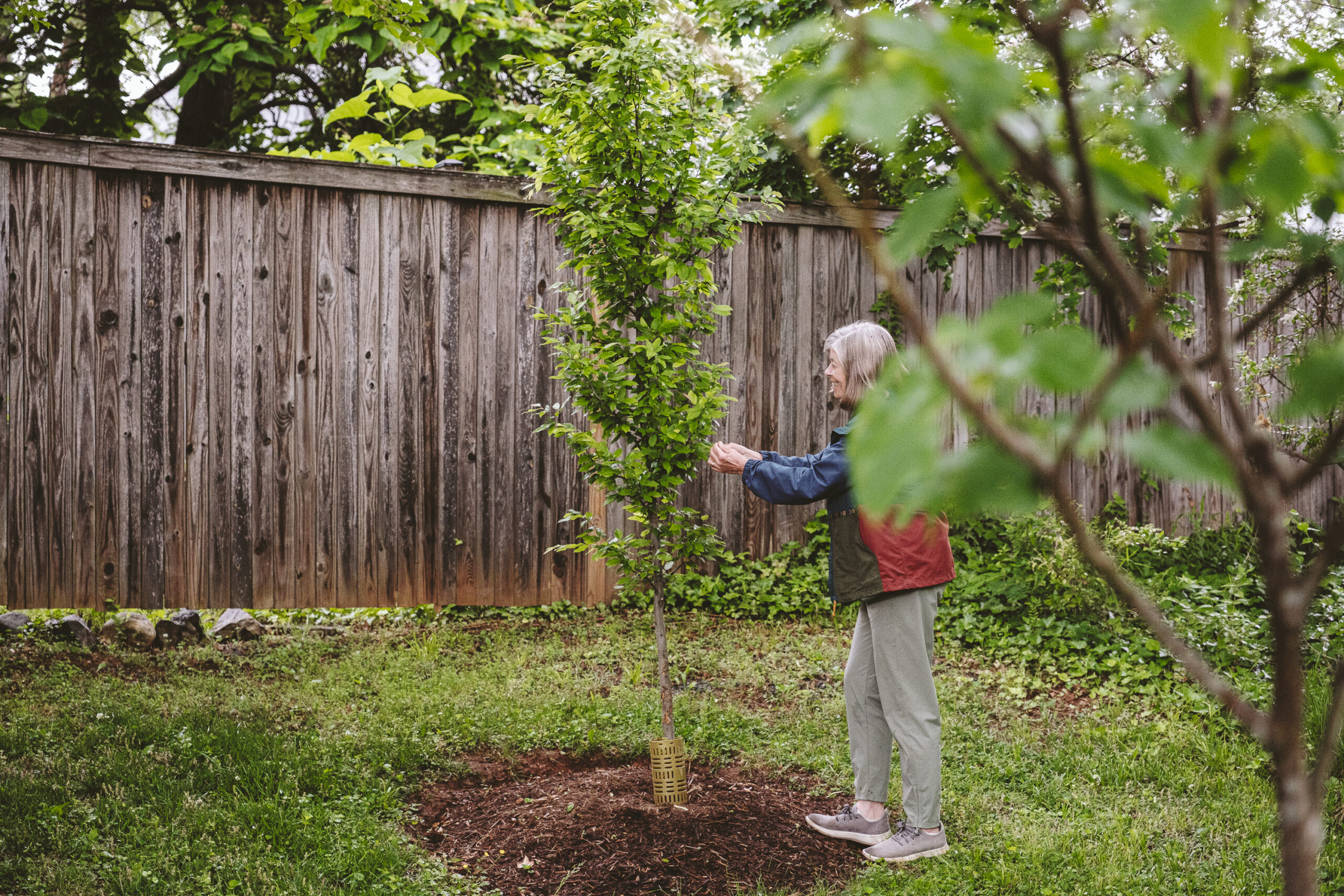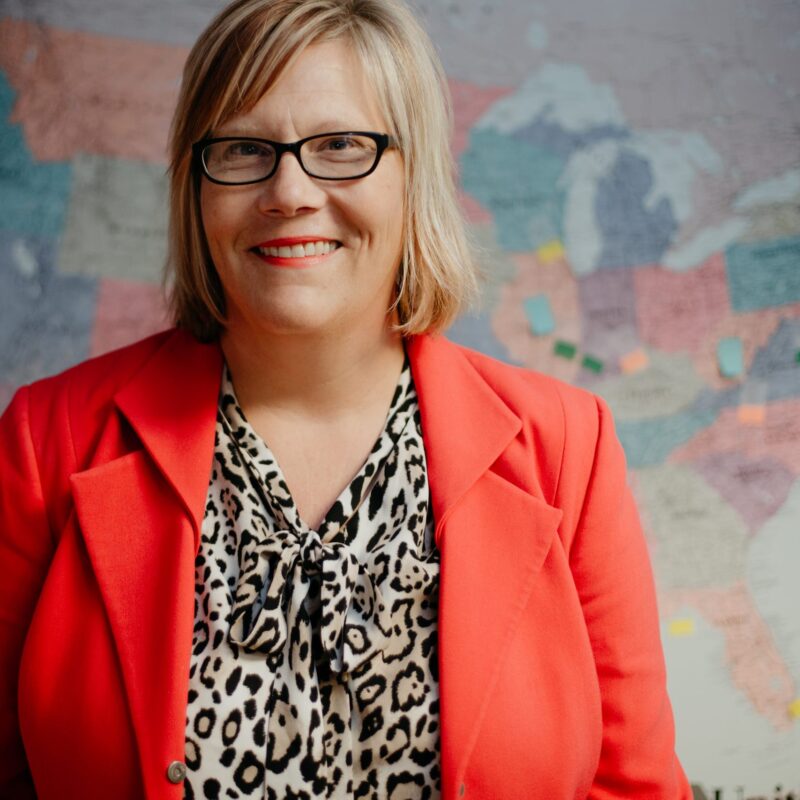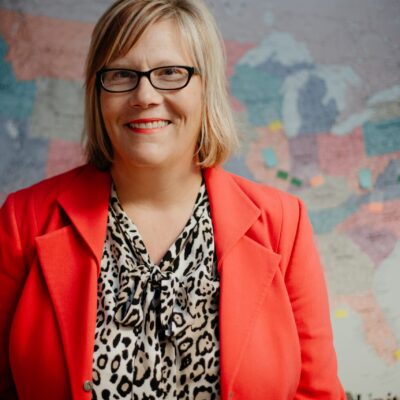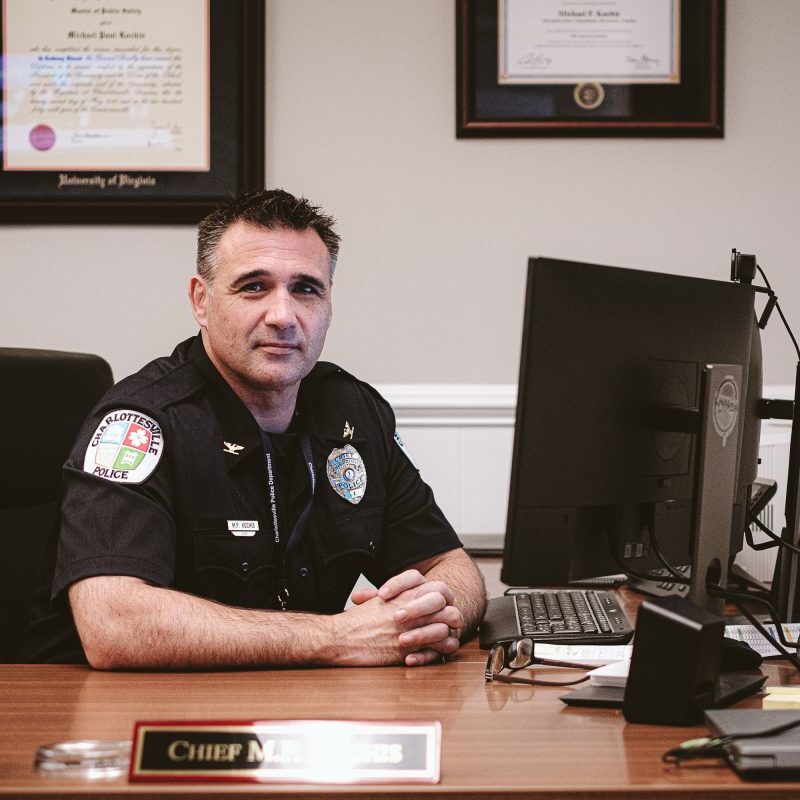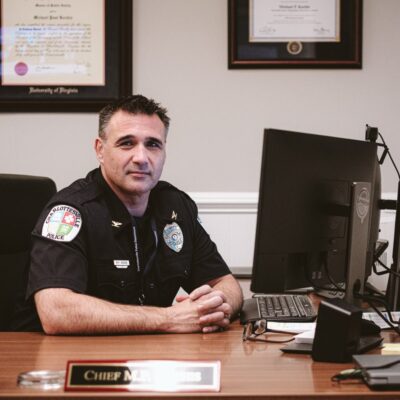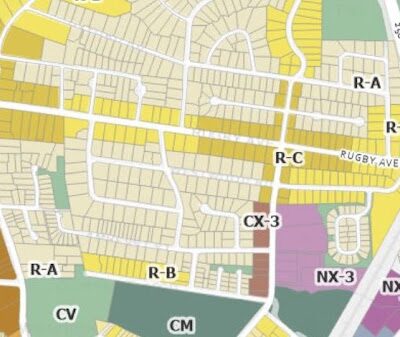In one of Charlottesville’s warmest neighborhoods, John Hunter’s yard feels like a cool oasis.
An array of waist-high shrubs and groundcover fills the property, while a billowy corkscrew willow, a hardy black walnut, and several juvenile trees cast shade over the space. Come summer, the plants go a long way toward helping Hunter and his wife beat the heat.
“Some of our friends will come by just to sit in our yard during the summertime,” Hunter says. “You can really feel the difference.”
Though many of the plants were put in the ground by Hunter and his wife, three of their newest trees came courtesy of the local nonprofit ReLeaf Cville. Formed in 2021, ReLeaf plants and maintains trees on private properties in an attempt to increase the city’s tree canopy, which dropped from 50 percent in 2004 to 38 percent in 2023, according to the Charlottesville Tree Commission’s 2024 State of the Forest report.
So far, the organization has focused on neighborhoods with the lowest percentage of tree canopy, areas that also tend to be the warmest on average. This includes Rose Hill, where Hunter lives, which has the third lowest tree canopy percentage in Charlottesville at 23 percent.
In 2023, ReLeaf’s small team of arborists, tree planters, and paid high schoolers (known as the Green Team) swept through Rose Hill looking for places to plant trees. The group put 129 trees in the ground that season, across 30 homes, two schools, and a small park, adding to the neighborhood’s overall tree canopy and giving homeowners like Hunter some reprieve from the summer heat.
“We would’ve taken more if we had more room,” Hunter says.
One house at a time
It’s no secret that trees are critical for a healthy, vibrant city. On hot summer days, trees provide shade and release water vapor through a process called evapotranspiration, lowering air-conditioning bills and reducing risk of heat-related illness. Studies have shown that just being around trees can help lower blood pressure and reduce stress and anxiety.
But when the city released its 2021 State of the Urban Forest report, it became clear that not all communities are benefiting equally. While neighborhoods such as Greenbrier, Fry’s Spring, and Barracks/Rugby boast a healthy tree canopy percentage of 50 percent or more, areas like Rose Hill, 10th and Page, and Starr Hill have well under 30 percent. These neighbors also have a lower average income, according to the report.
Peggy Van Yahres, who was chair of the Charlottesville Tree Commission when the report was released, says further studies show that about 75 percent of the available area for tree planting in Charlottesville is on private property. Since the city only plants on public property, expanding Charlottesville’s overall canopy meant there was a need to engage homeowners.
“Some of us thought, we’ve got to step in and do something,” says Van Yahres, who is now the chair of ReLeaf Cville.
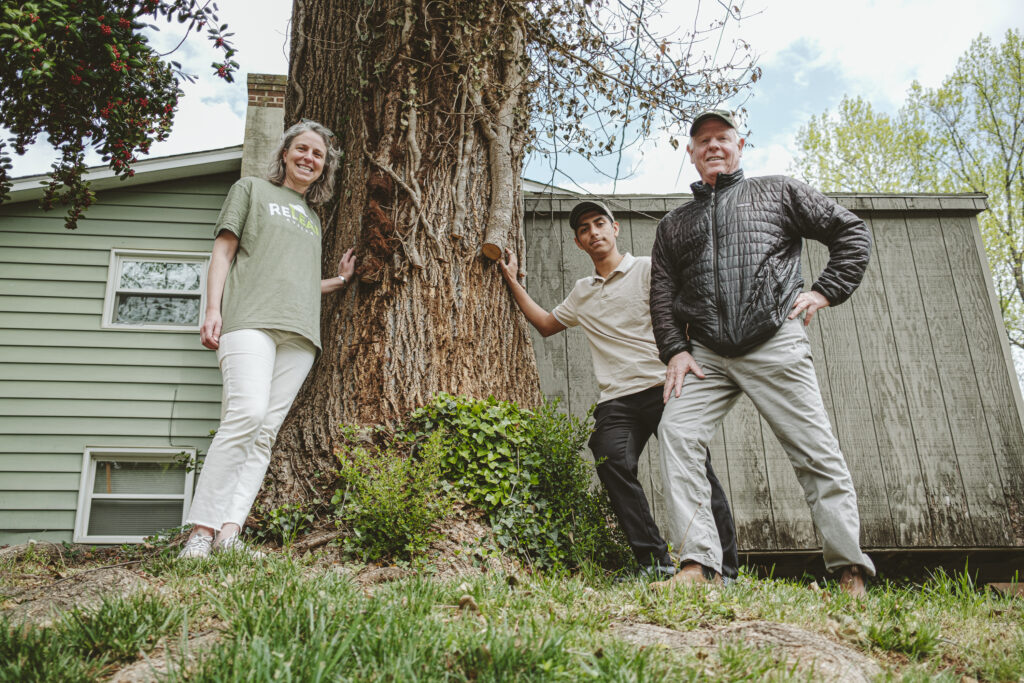
In 2021, members of the Charlottesville Tree Commission, Charlottesville Area Tree Stewards, and The Nature Conservancy in Virginia came together to form ReLeaf Cville—a partnership designed to work with homeowners on increasing tree canopy where it was needed most. The group received its initial funding from TNC and used tree canopy data to figure out which communities to focus on.
“We have 12 neighborhoods out of 19 that are under 40 percent [tree canopy],” says ReLeaf’s Co-Chair Keith Pitchford. “So we started in those neighborhoods.”
The group officially broke ground in 2022 by planting 39 trees in 10th and Page, where only 18 percent of the community is covered by trees. The next year, they tackled Rose Hill, with funding from the Virginia Department of Forestry, planting 129 trees. In 2024, the organization partnered with the Rivanna Conservation Alliance to plant 140 trees in Woolen Mills, where tree canopy is at 38 percent, but also a priority location for RCA due to its proximity to the river.
During those first three years, the organization mostly planted on private property, but also added trees to several schools, parks, and public housing communities within their target neighborhoods. Expert arborists such as Cville Arborist (formerly Pitchford Associates) canvassed neighborhoods explaining the importance of trees, and worked with willing homeowners to add new trees to their property.
“We choose about 12 trees that people can pick from,” says Keith Pitchford, a Charlottesville resident who spent much of his career preserving tree canopy in Washington, D.C. “We try to plant major shade trees because they’re gonna provide the most benefits.”
In 2025, ReLeaf Cville will continue planting trees in Woolen Mills as part of RCA’s Rivanna River Forest Health & Resilience Project, as well as Fifeville, where tree canopy is around 35 percent ReLeaf recently brought on Executive Director Cathy Boyd, who is hoping to grow the organization’s impact this year.
According to Pitchford, ReLeaf wants to help Charlottesville get every neighborhood to 40 percent tree canopy coverage and the city as a whole to 45 percent by 2050. Accounting for the current rate of tree loss, the city will have to plant about 3,697 trees a year to get to 45 percent, according to the Charlottesville Tree Commission.
To reach that goal, groups like ReLeaf are going to have to focus not only on getting new trees in the ground, but protecting the ones we already have.
Holding on to trees
When ReLeaf volunteers were out asking homeowners about planting new trees, they kept coming across properties where existing trees were showing signs of decay.
Development is the number one cause of tree loss in Charlottesville, but the second might be the threat of invasive plants and insects. Plants like English ivy, Oriental bittersweet, and Chinese wisteria, which originated outside of North America, are considered invasive because they grow quickly and can kill or outcompete native species for sunlight and space. The plants wrap themselves around trees, blocking out sunlight and adding extra weight that weakens branches. Meanwhile, the emerald ash borer, an invasive Asian beetle that is now present in Charlottesville, damages ash trees by feeding under the bark and disrupting the flow of water and nutrients.
The prevalence of invasives is so bad that the Charlottesville Tree Commission estimated that the city’s 38 percent tree canopy, measured by GIS technology, could be as low as 25 percent, given how much of the mapped canopy is invasive plants or trees wrapped in invasives.
“It’s a huge problem in Charlottesville,” says Pitchford. “But it can be contained.”
While canvassing neighborhoods, the ReLeaf team came across several imperiled trees that were 15 to 20 years old, the age at which they really start to deliver major environmental benefits like lowering air temperature and absorbing stormwater. However, many of the homeowners didn’t have the resources to save their trees and were even considering removing them.
“These big trees are giving us tremendous value in terms of shading and transpirational cooling and property values,” says Pitchford. “To see people take them out because they can’t pay to save them or to treat them? That’s a huge loss.”
Motivated to save some of these at-risk trees, ReLeaf formed a new program focused on tree preservation. In 2024, the nonprofit received a $189,900 grant from VDOF to preserve homeowner trees in Fifeville and 10th and Page over three years. Just like with their tree planting effort, the nonprofit surveyed these neighborhoods looking for endangered trees and asking homeowners if they could help.
John Warren is one of the homeowners whose tree received treatment. Over time, a tulip poplar next to his house had become covered in English ivy, adding extra weight to the branches and blocking the sunlight needed for growth. Near the base, the tree split into two separate branches (known as forking), which created weight distribution issues.
“The ivy was starting to get out of hand and we didn’t know what to do with it,” says Warren.
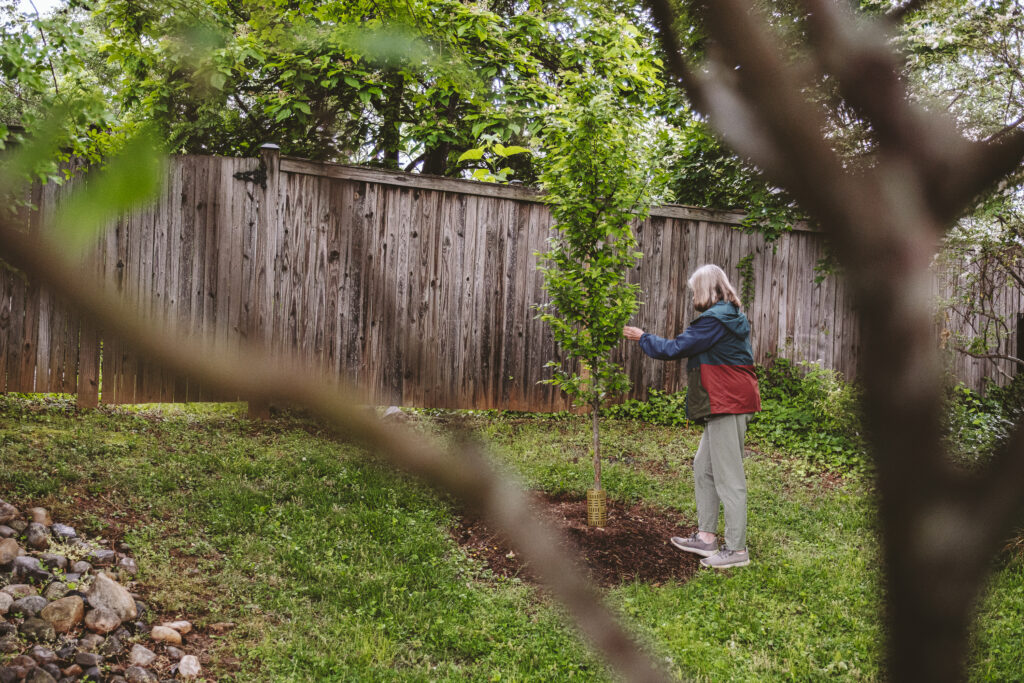
ReLeaf Cville approached Warren and said the group wanted to provide care for the tree. Warren accepted the support, and a team of arborists saved the tree by removing and killing the invasive ivy, and adding a cable that holds the two upper branches of the tree together, removing stress to the base.
“It’s looking a lot better now,” says Warren.
So far, ReLeaf has treated 48 trees on 28 properties, with support from three local tree care companies—Van Yahres Tree Company, Arboristry, and Bartlett Tree Experts. These groups offer deadwood pruning, vine removal, emerald ash borer treatment, and wood chip mulching, according to Pitchford.
“In some cases we did $3,000 worth of work for free,” says Pitchford.
Inspiring the next generation
If you live in 10th and Page, Rose Hill, or Woolen Mills and noticed high schoolers with green T-shirts and hats in your neighborhood, you likely saw the Green Team at work.
The Green Team is a paid, two-week summer program where high school students learn about the importance of trees, canvass neighborhoods, and help ReLeaf plant trees. According to Boyd, participants get a crash course in tree planting and maintenance from expert arborists while building critical communication skills as they interface with homeowners.
“They love to plant the trees, and we love having teenagers help us plant trees,” Van Yahres says.
Antony Arostegui, a senior at Charlottesville High School, started with the Green Team in 2024. In addition to helping plant trees, Arostegui talked with homeowners about ReLeaf and its mission. “I was really nervous at first,” says Arostegui. “But then I got more confident. And I really liked it.”
Ten students participated in the Green Team in 2022 and 2023, and ReLeaf is currently putting together its 2025 team. According to Van Yahres, the nonprofit hopes to expand the program so that participants can be learning and conducting environmental work all year long.
The Green Team is a key part of ReLeaf’s third program area: education. As a collection of some of Charlottesville’s top environmental professionals, ReLeaf staff have given presentations in schools and organized career fairs, hoping to grow awareness of the city’s tree issues and contribute to the green workforce: arborists, biologists, city planners, technicians, and other working professionals pursuing a career in environmental protection.
“We’re developing who we hope to be environmental leaders of the future,” says
Van Yahres.
As threats to tree canopy mount, developing these future leaders could be key to the city’s environmental health long term. Members of ReLeaf can plant a new tree today, but decades from now, someone else will have to be there to prune and fend off the vines.
